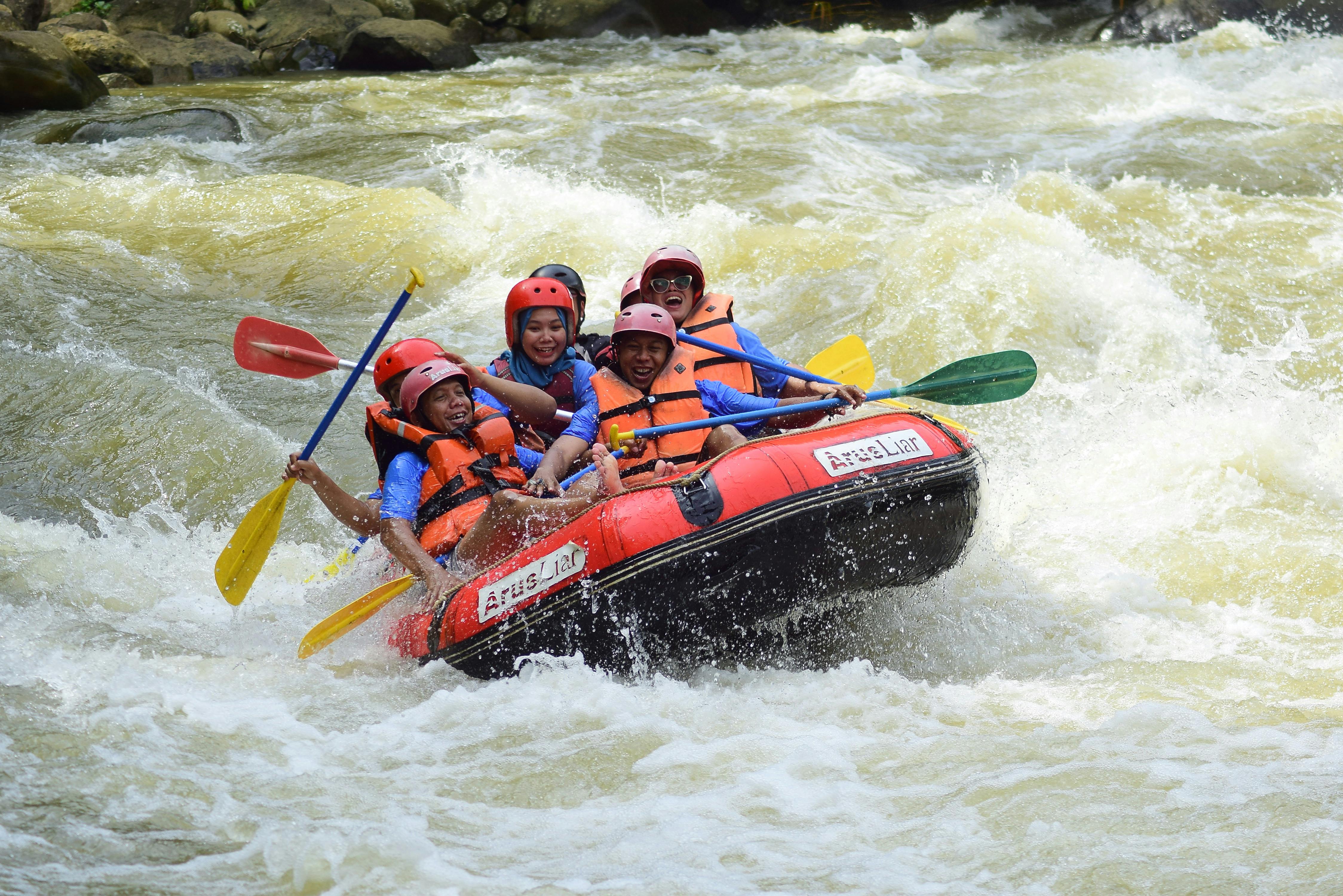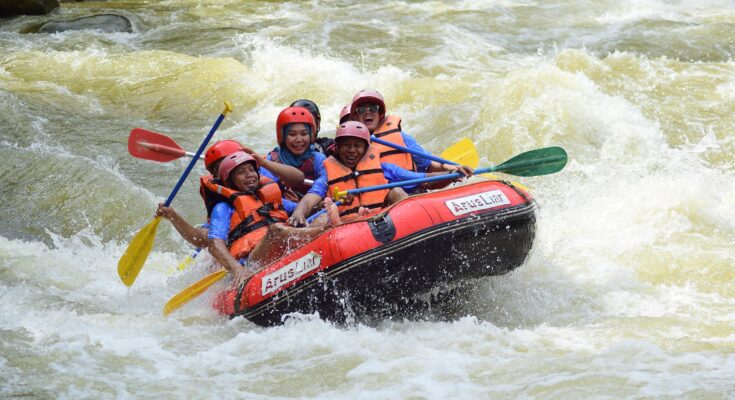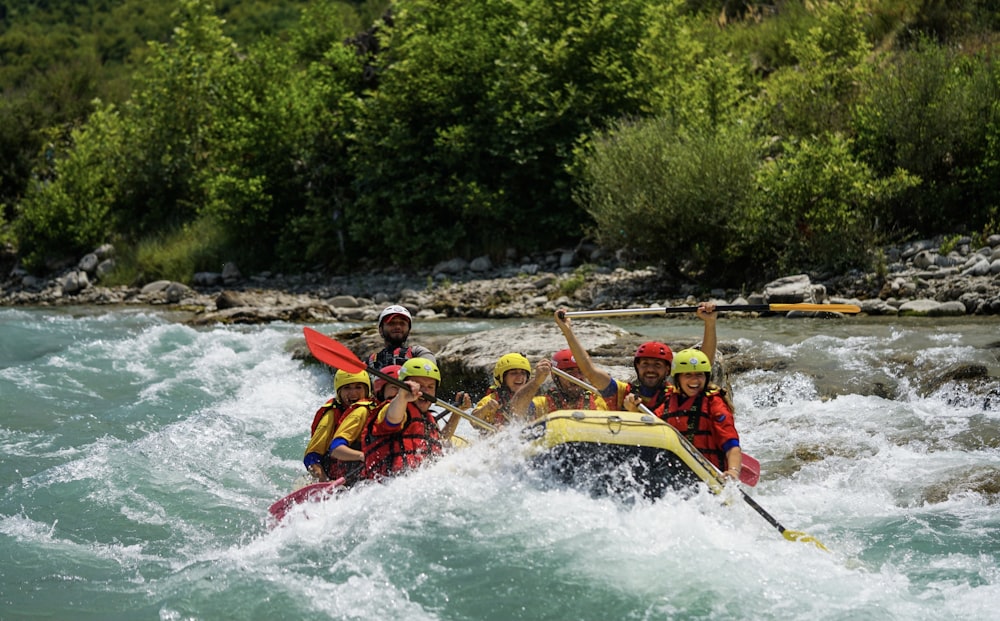White Water Rafting: Guide for a Safe Adventure
White water rafting can be the ideal pastime for you if you’re searching for an exhilarating pastime that incorporates rivers and the outdoors. It is an excellent group activity for older kids and adults.
It involves utilizing an inflatable raft to travel through harsh seas. At lower difficulty levels, white water rafting is actually rather safe, despite its daunting initial reputation. You can enjoy this outdoor sport in safety if you prepare yourself with rafting expertise, pay attention to your guide, and carefully plan your trip.
Sitting on outer rim of raft: white water rafting
Image via Unsplash.com
Although your first instinct might be to sit inside the raft, doing so will actually make you more likely to be flung overboard. Rather, take a seat on the outside edge of the raft and place your feet inside using the foot cones or cross tubes. Place your foot closest to the inside of the raft under any foot cones if your raft has them. You can put one foot under the cross tubes on your raft, also known as a thwart, if they are there to help stabilize you. For stability, place your other foot under the outer tube.
You can reduce your risk of being thrown overboard by sitting in the middle.
Correct hand position: white water rafting
If you hold the paddle incorrectly while your raft is moving downstream, it could endanger the safety of people nearby. Ensure that one hand is securely gripping the paddle’s shaft and the other is covering the “T” grip at the end.
If the “T” grip escapes your hand, it could hurt other rowers’ bodies and faces.
Try alternating between the two hands to find the most comfortable position for you.
Learn pedaling
Image via Unsplash.com
You’ll become tired of using your arms alone very quickly. Lean into the stroke as you paddle and use your entire weight to lean back, rather than relying just on your arms. You can control your raft more effectively if you paddle in unison with several people. When you execute a backstroke, you should also lean into the stroke. Lean forward, drag your paddle backward, and use your leg as an anchor to execute a backstroke.
To keep your raft stable as you go down the rapids, paddle aggressively.
Those in the raft ought to make an effort to paddle in unison with those at the front.
Bracing over the bump: white water rafting
A knowledgeable white water rafter or instructor will frequently shout “bump” as your raft is about to pass over a rock or other rough surface. In this situation, you should lean in towards the center of the raft and remove your paddle from the water.
As you cross the rocky area, keep your grip on your paddle by placing it in the “T” grip on the ground.
Safety equipment
Image via Unsplash.com
A helmet, a personal flotation device, the appropriate size paddles, a throw bag or rope, and a first aid pack are necessities when riding the rapids. Obtaining these necessities is advised by most guides and instructors and can help ensure your safety during your expedition.
Listen to your guide
You will probably have an instructor if this is your first time white water rafting, who can provide you with the basic safety instructions. More significantly, as your raft is down the rapids, they will probably call out directions and determine the pace. Try not to panic if the going gets rough and adhere to the raft instructor’s instructions exactly as they are laid out.
Frequently, the instructor will gesture in the direction they want the raft to go. We refer to this as “positive pointing.”
Avoid rafting in the dark alone: white water rafting
Rafting should never be done in the dark or by yourself since it might be quite dangerous. Experienced rafters can assist you and answer your questions if this is your first time white water rafting. White water rafting in the dark is extremely risky. Since you cannot see potential obstacles, such as distant rocks, or where someone may end up if they are tossed overboard.
Do not panic
Image via Unsplash.com
Shock and panic are your body’s first reactions when you’re flung overboard from your raft and find yourself submerged in frigid water. This can make it more difficult to climb back into your raft. Since it throws off your breathing pattern and impairs your judgement. Try to reach the water’s surface while remaining calm. After you’ve done that, you’ll be in a better position to decide how to proceed and avoid danger.
In order to focus on the task at hand rather than the fact that you were tossed overboard, try to control your breathing.
Moving towards the raft: white water rafting
As soon as you are able to breathe and reach the water’s surface. Take a moment to collect yourself and locate the raft. If you are tossed overboard, it’s common to land right next to the raft. You can try to convince someone else to pull you closer to the boat if you are farther away from the raft by extending your paddle towards it.
Make sure you give the person pulling you in the “T” grip when you extend your paddle.
Grab onto the safety line

Image via Pexels.com
To stabilize yourself, hold onto the line that is fastened to the raft’s edge. Give your paddle to someone inside the raft if you still have it so you can use both hands to grip onto it. Await being pulled in by someone by hanging onto the raft’s side.
Planning a budgeted trip: white water rafting
Reduce the number of vacations you are considering and pick one that you can afford. Visit their website to find out when white water rafting is offered. Furthermore, you should confirm that it works with your timetable. It’s wise to set aside a whole day for white water rafting. As it might take anywhere from three to six hours.
A one-day guided white water rafting trip typically costs between $25 to $115 per person.
USEFUL LINKS:
Click here to know more tips on White Water Rafting
Improve Your Stroke in Swimming





![500+ Rafting Pictures [HD] | Download Free Images on Unsplash](https://plus.unsplash.com/premium_photo-1661861258656-f4ed72ab27e5?auto=format&fit=crop&q=80&w=1000&ixlib=rb-4.0.3&ixid=M3wxMjA3fDB8MHxzZWFyY2h8MTN8fHJhZnRpbmd8ZW58MHx8MHx8fDA%3D)


